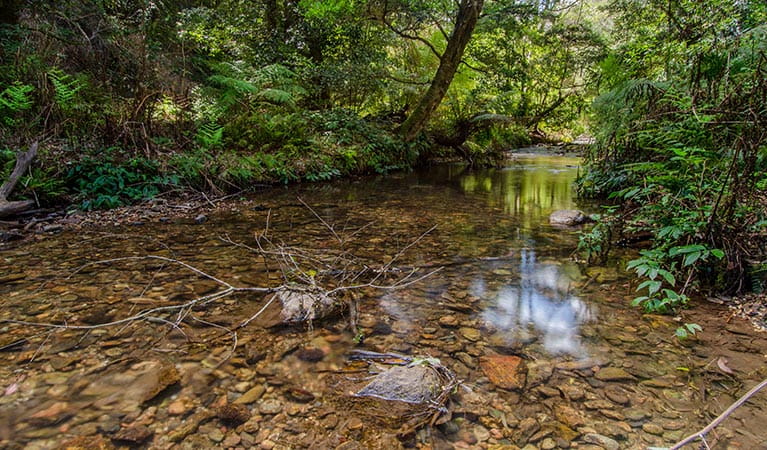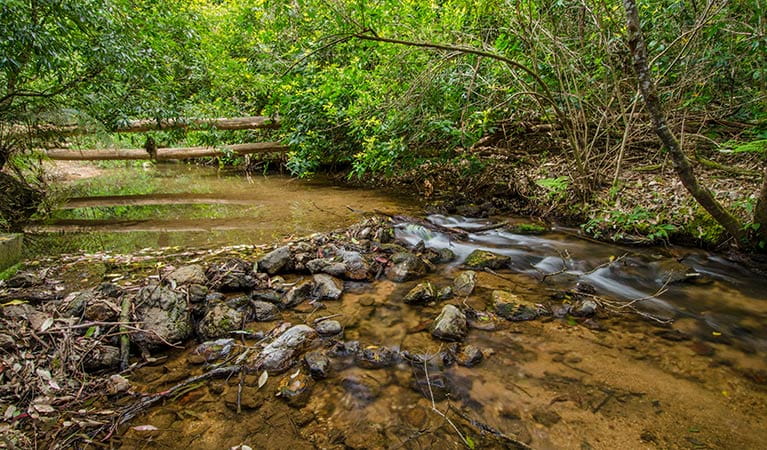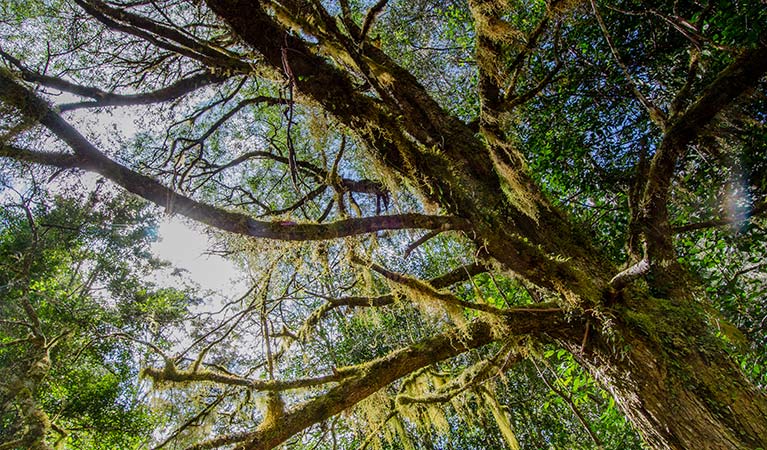Woko National Park
Learn more
Learn more about why this park is special
Woko National Park is a special place. Here are just some of the reasons why:
Significant forest

Woko conserves 8598 hectares of regionally significant forest communities, including part of one of the most extensive areas of dry rainforest in NSW. The steep hills in the park are occupied by a variety of plants and forest types, from dry sclerophyll forest to subtropical rainforest and eucalypt zones. This makes a walk here particularly fascinating, as you traverse different regions and watch the landscape transform before your very eyes.
- Brush Turkey track A short but sweet bushwalk, Brush Turkey track begins and ends at Woko campground and gives the hiker an insight into the progressive growth of a dry rainforest.
- Cliff Face track Cliff Face track provides a challenging walk through the best of Woko National Park, with dramatic scenic views towards the escarpment above.
Rich Aboriginal culture

The Biripi people of the Manning Valley were the first to inhabit this area, with several open campsites having been recorded along the ridgelines and peaks of the park. Indeed, 'Woko' is thought to be a local Aboriginal name for the boobook owl. Aboriginal culture engages with the land, waterways, plants and animals of a specific place; the NSW National Parks and Wildlife Service works with local Aboriginal communities to protect this heritage for future generations.
Rare animals

Woko National Park contains a number of threatened or endangered species, including the brush-tailed rock wallaby, masked owl, and wompoo pigeon. This is, in fact, prime territory for birdwatching, with lyrebirds, brush turkeys, and wedge-tailed eagles regularly spotted in the park. Largely, this is due to the variety of environments encompassed by Woko: the grey fantail, for example, favours the mid-layer of the forest, while the willy wagtail enjoys the openness of the forest edge and spaces created by cattle clearing.
- Brush Turkey track A short but sweet bushwalk, Brush Turkey track begins and ends at Woko campground and gives the hiker an insight into the progressive growth of a dry rainforest.
- Cliff Face track Cliff Face track provides a challenging walk through the best of Woko National Park, with dramatic scenic views towards the escarpment above.